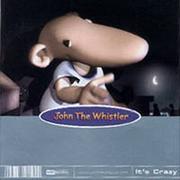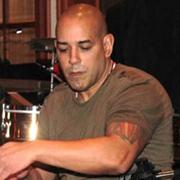John Howard
| 基本信息 | |||
|---|---|---|---|
| 姓名 | John Howard | 别名 | 暂无 |
| 国籍 | 美国 | 出生地 | |
| 语言 | 性别 | 男 | |
| 生日 | 星座 | ||
| 身高 | 体重 | ||
John Howard made an obscure British singer/songwriter album in the mid-'70s, Kid in a Big World, which like several efforts from that period showed the heavy influence of then newly emergent superstar Elton John. Howard was lower-key and more inclined toward eccentric story-songs, and not as gifted with a flair for chart hooks, though he too had a keyboard base to his arrangements and melodic ideas combining Beatles-Beach Boys pop with '70s singer/songwriting.
Howard first tried to enter the record business in the late '60s, when the classically trained pianist unsuccessfully sent in a tape of his songs to Apple Records for consideration. Changing his name from Howard Jones (though he was no relation to the '80s pop star Howard Jones) to John Howard, he actually turned down the chance to join a band that later become Iron Maiden. Instead, he worked on the college circuit and folk clubs, and got a management contract with Hurricane Smith's manager, Stuart Reid. He signed to CBS UK in late 1973, and recorded Kid in a Big World with ex-Shadows drummer Tony Meehan as producer and Argent's Bob Henrit and Rod Argent among the session men. Preceded by the late-1974 release of the "Goodbye Suzie" single, Kid in a Big World was released in February 1975, although it suffered from indifferent promotion and didn't make much of an impact. Although a second album was started, it never reached completion, in part because of intervention from CBS to try making it more commercial. The RPM label finally released the demos for that album in 2004 as Technicolour Biography. A year later, RPM issued another collection of demos, Can You Hear Me OK?, while the Bad Pressing label issued The Dangerous Hours, the first new album he had recorded in three decades. The wait would be much shorter for the next new album as As I Was Saying appeared before the end of 2005 on Cherry Red.
Howard first tried to enter the record business in the late '60s, when the classically trained pianist unsuccessfully sent in a tape of his songs to Apple Records for consideration. Changing his name from Howard Jones (though he was no relation to the '80s pop star Howard Jones) to John Howard, he actually turned down the chance to join a band that later become Iron Maiden. Instead, he worked on the college circuit and folk clubs, and got a management contract with Hurricane Smith's manager, Stuart Reid. He signed to CBS UK in late 1973, and recorded Kid in a Big World with ex-Shadows drummer Tony Meehan as producer and Argent's Bob Henrit and Rod Argent among the session men. Preceded by the late-1974 release of the "Goodbye Suzie" single, Kid in a Big World was released in February 1975, although it suffered from indifferent promotion and didn't make much of an impact. Although a second album was started, it never reached completion, in part because of intervention from CBS to try making it more commercial. The RPM label finally released the demos for that album in 2004 as Technicolour Biography. A year later, RPM issued another collection of demos, Can You Hear Me OK?, while the Bad Pressing label issued The Dangerous Hours, the first new album he had recorded in three decades. The wait would be much shorter for the next new album as As I Was Saying appeared before the end of 2005 on Cherry Red.
 加载评论内容,请稍等......
加载评论内容,请稍等......













